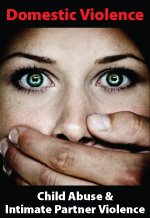By Denise Mann
 The emotional and physical scars from being bullied or exposed to other types of violence as a child may go deeper than imagined.
The emotional and physical scars from being bullied or exposed to other types of violence as a child may go deeper than imagined.
New research shows that the genetic material, or DNA, of children who experienced violence shows the type of wear and tear that is normally associated with advancing age.
“Children who experience extreme violence at a young age have a biological age that is much older than other children,” says researcher Idan Shalev. He is a post-doctoral researcher in psychology and neuroscience at the Duke Institute for Genome Sciences & Policy in Durham, N.C.
Youth violence is widespread in the U.S. today. The CDC states that it’s the second leading cause of death among people between the ages of 10 and 24, and that nationwide, about 20% of students in grades 9-12 were bullied in 2009.
Bullied Kids Age Faster Than Others
To see whether youth violence affects vulnerability to aging, the study authors focused on telomeres, or tiny strips of genetic material that look like tails on the ends of our chromosomes; think of a cap on an end of a shoelace. Telomere shortening is an indicator of cell aging.
The researchers analyzed DNA samples from twins at ages 5 and 10 and compared telomere length to three kinds of violence: domestic violence between the mother and her partner, being bullied frequently, and physical maltreatment by an adult. Moms were also interviewed when kids were 5, 7, and 10 to create a cumulative record of exposure to violence.
Children who were exposed to cumulative violence showed accelerated telomere shortening from age 5 to age 10. What’s more, children who were exposed to multiple forms of violence had the fastest telomere shortening rate, the study shows.
“Children who experience violence appear to be aging at a faster rate,” Shalev says.
Whether or not these changes are reversible is not clear. Shalev and colleagues plan to study the children for longer periods of time to see what happens later on in life. Their findings appear in Molecular Psychiatry.
Bullying Scars Run Deep
Bullying and other violence experienced during childhood may cause a physical erosion of DNA, says Paul Thompson, PhD. He is a professor of neurology at the David Geffen School of Medicine at the University of California, Los Angeles.
“We now have a physical record that violence during childhood could be damaging later in life,” he says. This is a “big surprise.”
Victor Fornari, MD, director of child and adolescent psychiatry at the Zucker Hillside Hospital in Glen Oaks, N.Y., says the new findings make perfect sense. “This article really points to a potential biological [indicator] that helps explain some of the differences in the brains of children who have experienced significant trauma and stress,” he says.
Read more: http://children.webmd.com/news/20120423/kids-exposed-bullying-violence-may-age-faster


